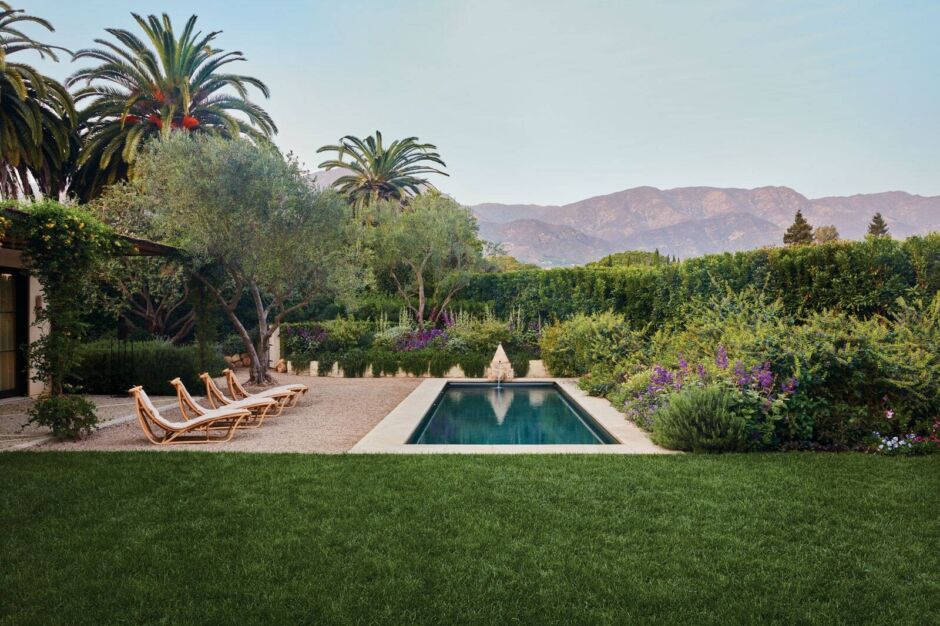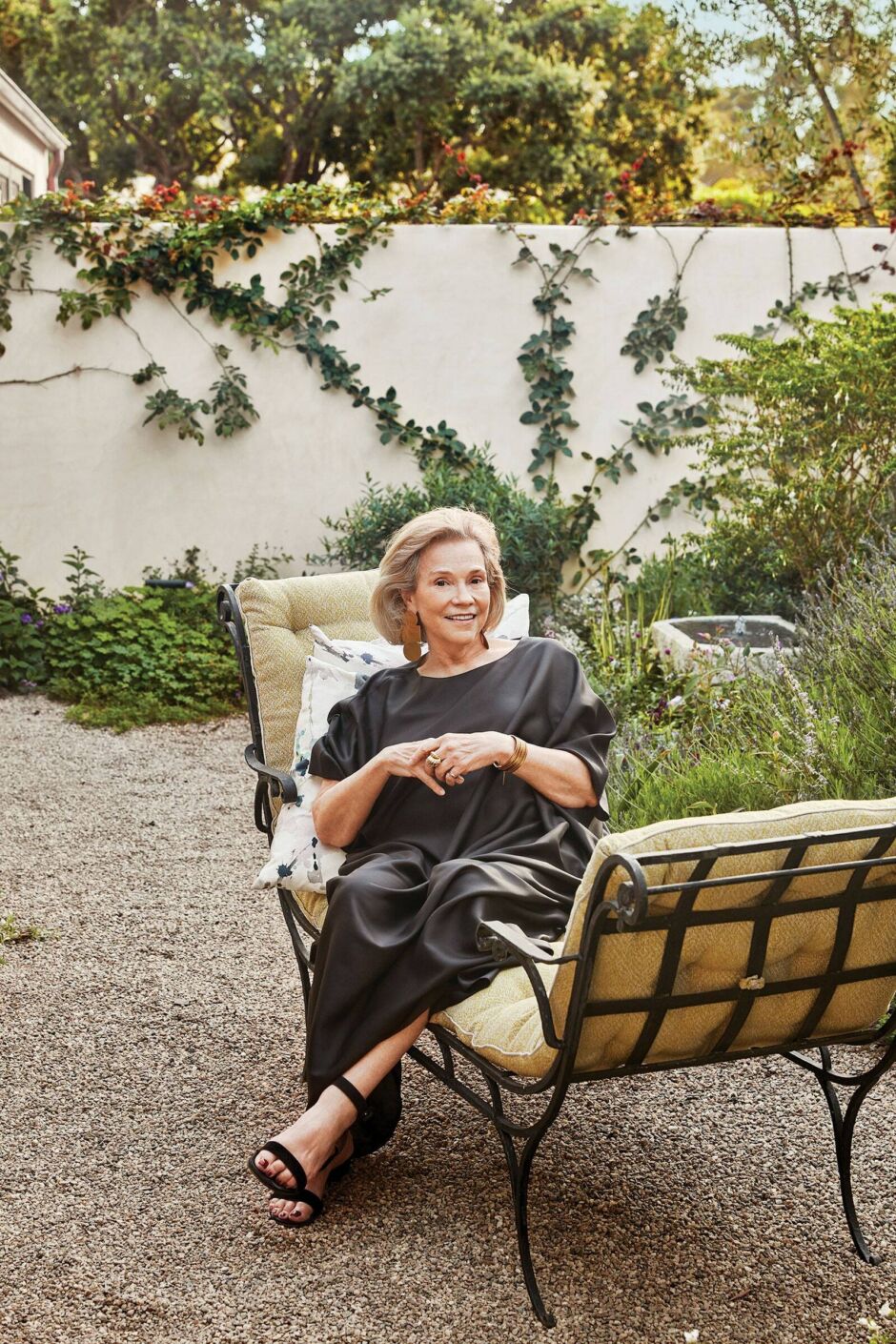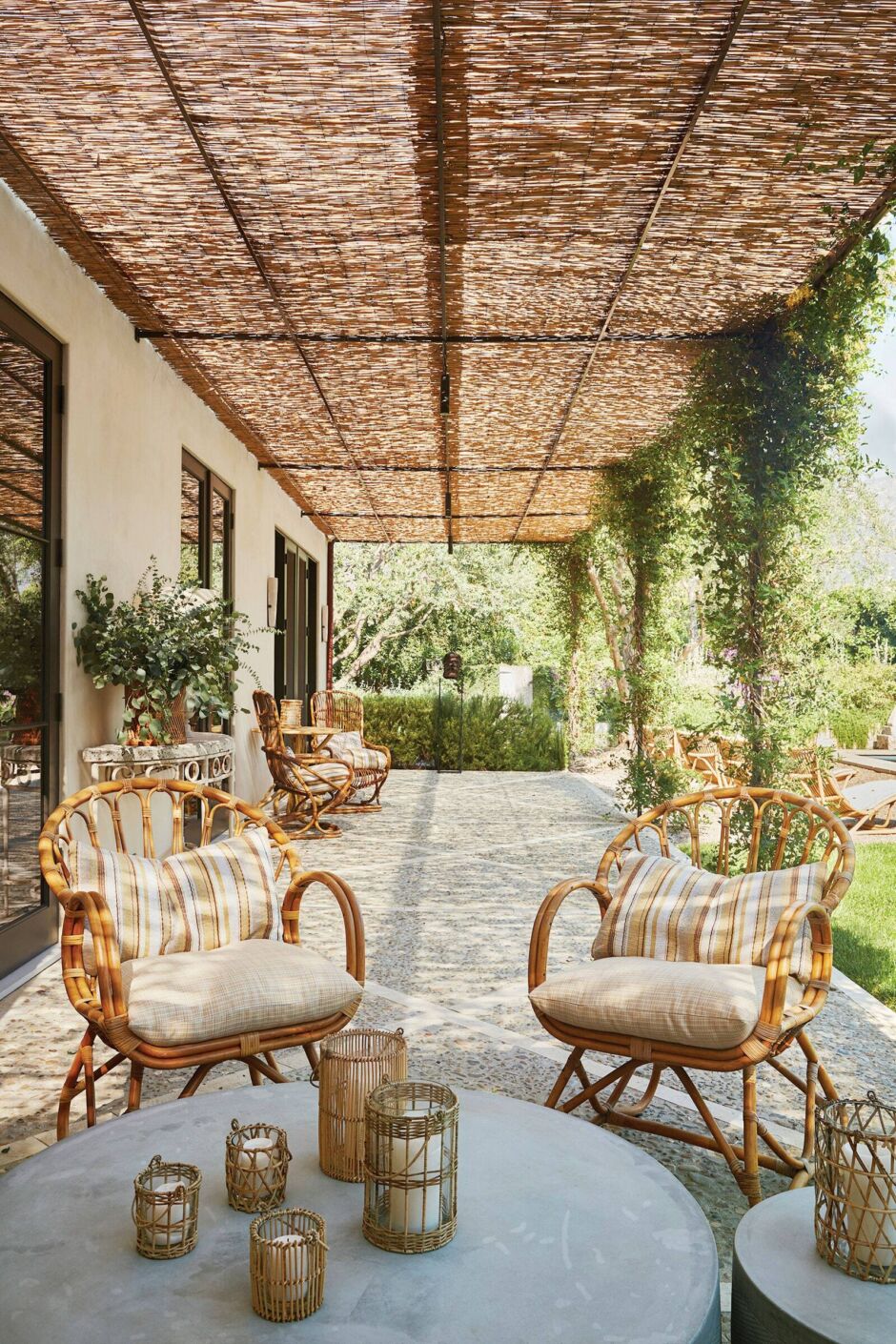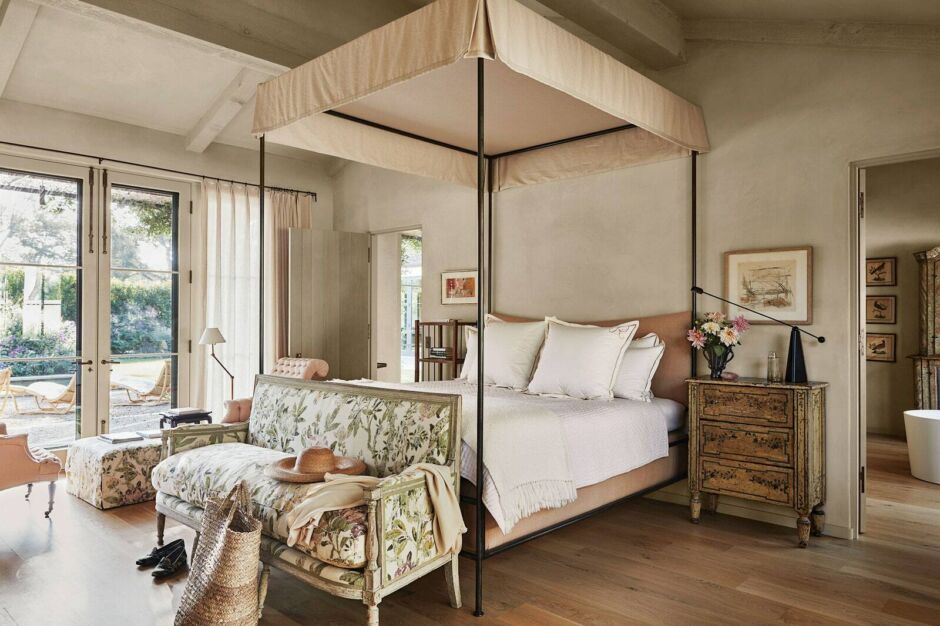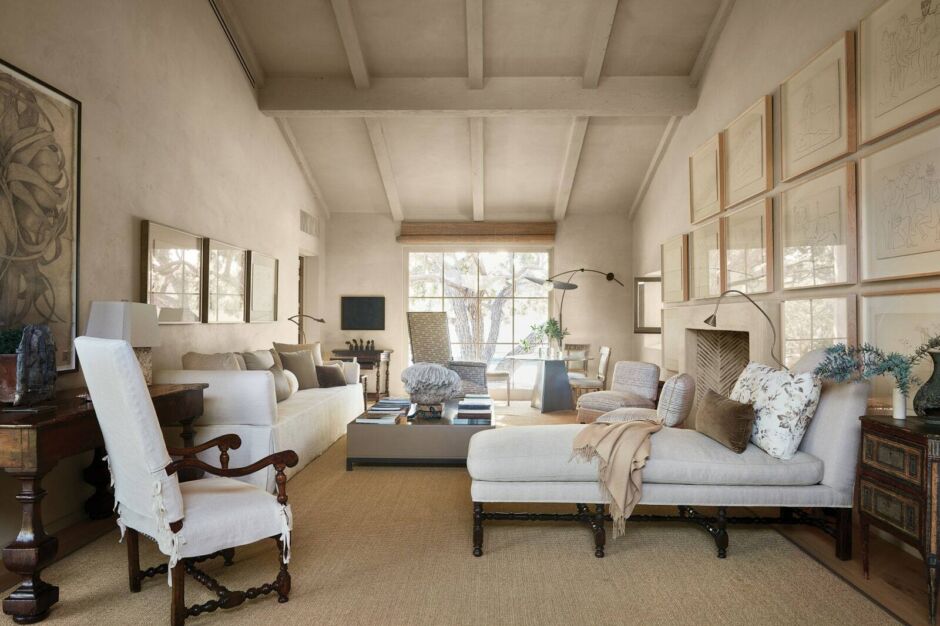No one would ever accuse designer Suzanne Rheinstein of being a minimalist. Her work merges a love of English country style, the gracious hospitality of her native New Orleans, and the laid-back attitude of Los Angeles. In her store, Hollyhock, for three decades she shared her passion for painted furniture, George III mahogany, blue-and-white porcelain, and plush upholstery. Her fabric line for Lee Jofa is full of fresh interpretations of florals, paisleys, and ikats.
And yet the getaway that she recently created for herself in Montecito is pared down, serene, and almost startling in its simplicity. Rheinstein had long been hoping to find a house in the area, even before the death in 2013 of her husband, Fred, an influential television entrepreneur. “I had been trying for years to convince Fred. But he always thought I was trying to put him out to pasture,” she says with a laugh.

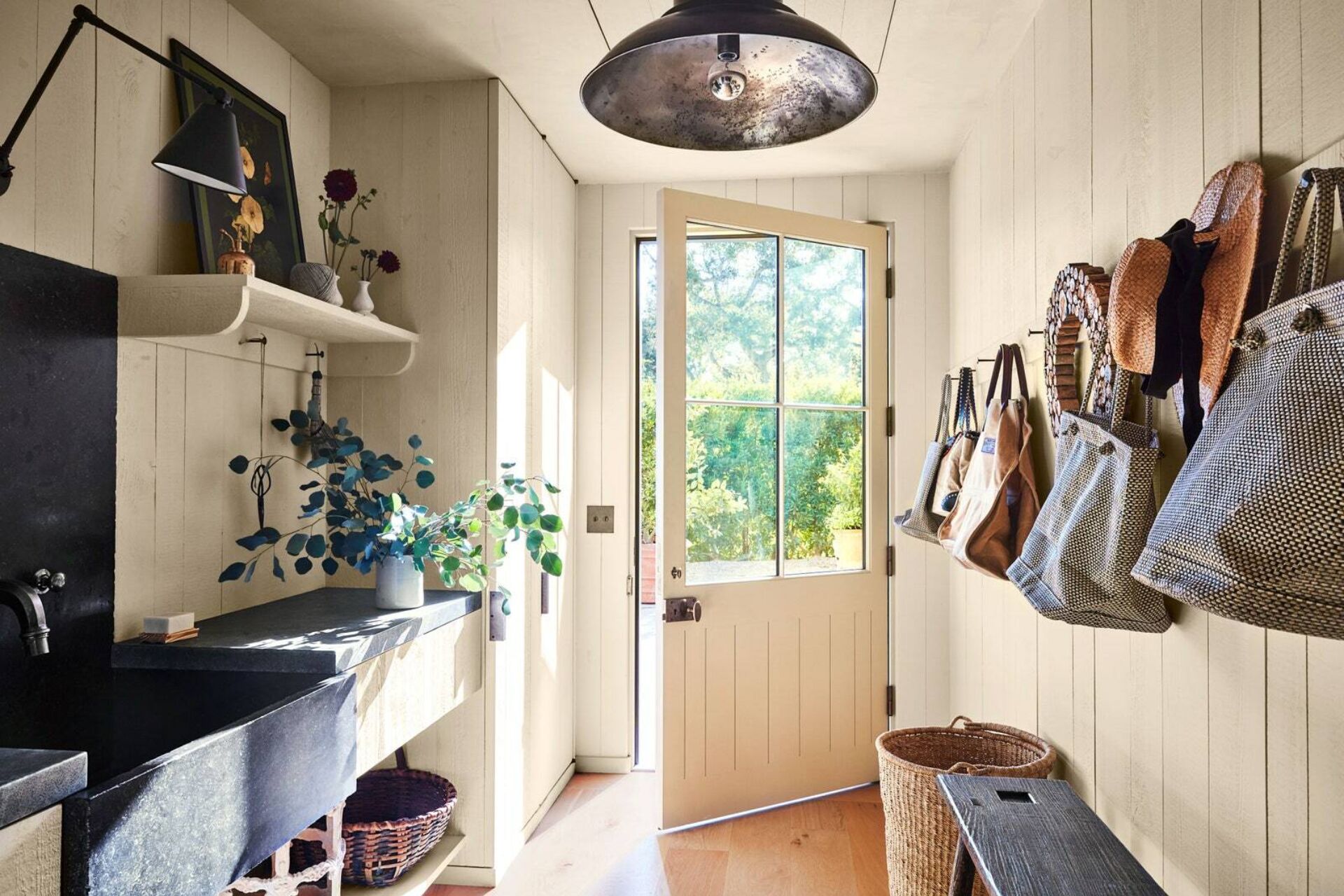

 Back to overview
Back to overview
